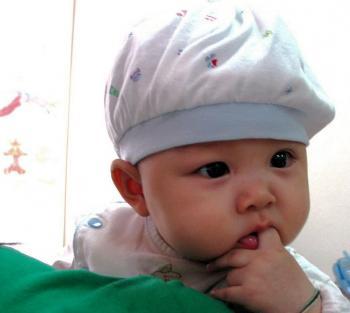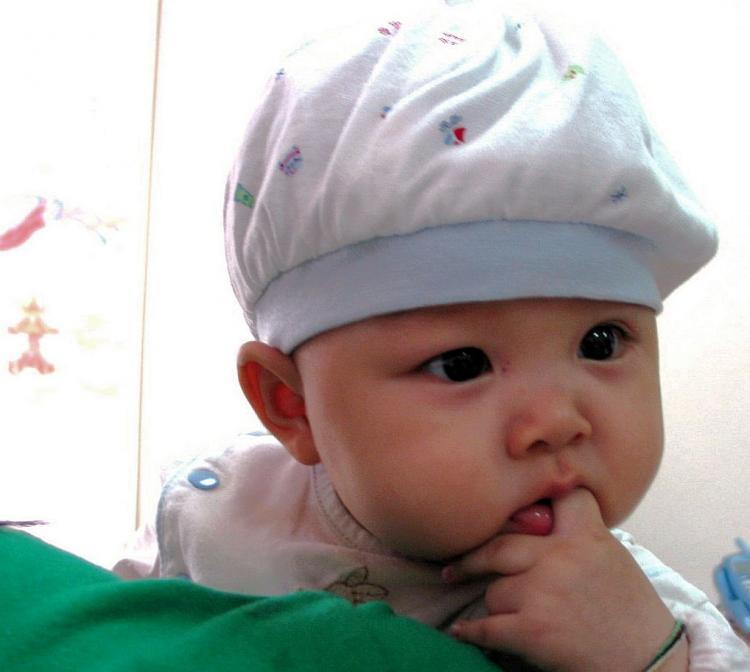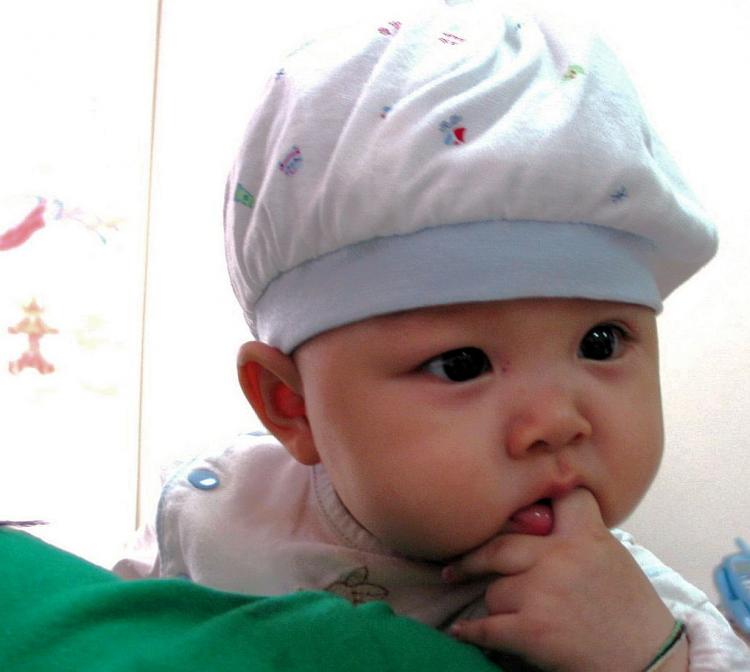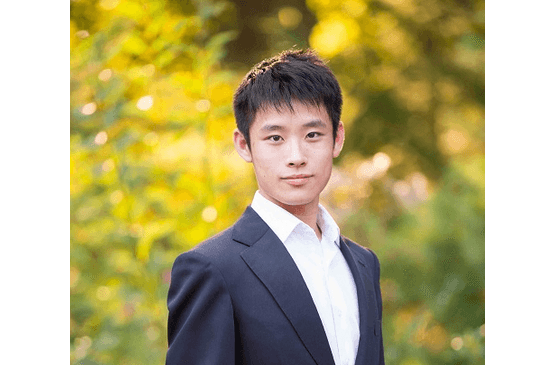Humans learn to be social animals at a very young age, recent research suggests. Scientists have found that infants can engage in joint attention—following another person’s gaze toward an object and sharing attention to it with the person—from 5 months of age.
Joint attention is important in communication, teaching and learning, and cooperation. Not being able to engage in joint attention is thought to be a sign of autism.
Researchers Dr. Tobias Grossmann and Dr. Mark Johnson from the University of London used near-infrared spectroscopy (NIRS), a noninvasive technique, to examine which areas of an infant’s brain are activated when engaging in joint attention by measuring blood flow with near-infrared light from sources on a sensor pad located on the head. The near-infrared light passes through the skin, skull, and brain tissue, and is detected by sensitive detectors on the sensor pad.
During the experiment, babies are shown a computer-animated image of an adult’s face that makes eye contact with the baby and leads the baby to look at an object.
The researchers found that when the babies engaged in joint attention with the adult face, they activate their left prefrontal cortex, an area at the front of the brain involved in complex cognitive and social behaviors.
“Infants engaged in joint attention use a similar region of their brain as adults do,” said Grossmann in a press release. “Our study suggests that the infants are tuned to sharing attention with other humans much earlier than previously thought. This may be a vital basis for the infant’s social development and learning.”
“In the future this approach could be used to assess individual differences in infants’ responses to joint attention and might, in combination with other measures, serve as a marker that can help with an early identification of infants at risk for autism.”
Joint attention is important in communication, teaching and learning, and cooperation. Not being able to engage in joint attention is thought to be a sign of autism.
Researchers Dr. Tobias Grossmann and Dr. Mark Johnson from the University of London used near-infrared spectroscopy (NIRS), a noninvasive technique, to examine which areas of an infant’s brain are activated when engaging in joint attention by measuring blood flow with near-infrared light from sources on a sensor pad located on the head. The near-infrared light passes through the skin, skull, and brain tissue, and is detected by sensitive detectors on the sensor pad.
During the experiment, babies are shown a computer-animated image of an adult’s face that makes eye contact with the baby and leads the baby to look at an object.
The researchers found that when the babies engaged in joint attention with the adult face, they activate their left prefrontal cortex, an area at the front of the brain involved in complex cognitive and social behaviors.
“Infants engaged in joint attention use a similar region of their brain as adults do,” said Grossmann in a press release. “Our study suggests that the infants are tuned to sharing attention with other humans much earlier than previously thought. This may be a vital basis for the infant’s social development and learning.”
“In the future this approach could be used to assess individual differences in infants’ responses to joint attention and might, in combination with other measures, serve as a marker that can help with an early identification of infants at risk for autism.”




